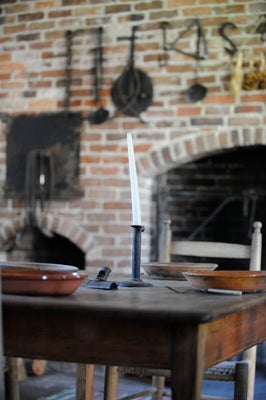BONNER POINT: Historic home a Bath treasure
Published 10:34 pm Thursday, April 10, 2014
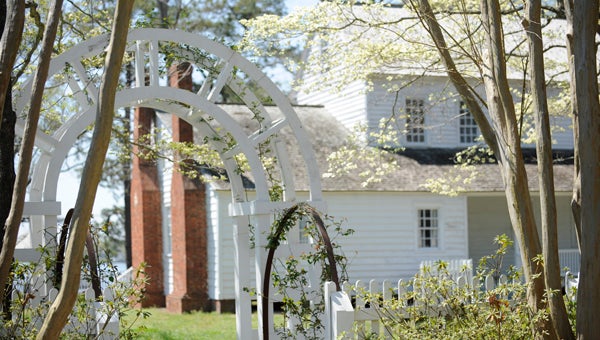
A BEAUTIFUL SPOT: The circa 1830 Bonner House, that sits at the intersection of Bath and Back creeks, is one of Bath treasures and part of the Historic Bath State Historic Site.
It’s long been considered a Bath treasure, the summer home, then the permanent home of the Washington Bonner family.
Built in 1830 by Joseph Bonner, the house occupies a premium spot in Bath, where Bath and Back creeks merge on their way out to the Pamlico. The Bonner House porch has a view all the way to the south shore of the river and its sprawling length is reminiscent of days past.
The home was passed down through the Bonner family for generations, but it was when Bayview native, and co-founder of Smith Douglas Fertilizer Company, Oscar F. Smith’s Foundation bought it that it became a public treasure and part of Historic Bath’s State Historic Site.
“I’ve always been happy that, not only did they save the house, but the land for public enjoyment,” said Leigh Swain, site manager for Historic Bath State Historic Site.
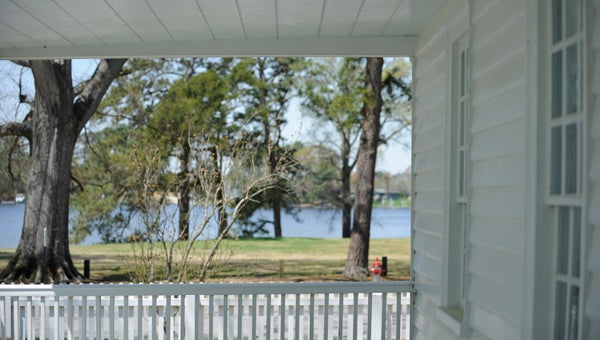
BIRDSEYE VIEW: From the front porch of the Bonner House, the Bonner family could see every ship that came into and left from the old port town of Bath.
Outside, master gardener Blanche Monroe, with the help of many volunteers, has created a landscape true to the early 19th-century home in eastern North Carolina: scuppernong grapes, Mattamuskeet apple trees, a hidden garden that, just weeks ago, was a showcase of daffodils.
“The yard had a lot of thought and care in choosing plantings in the last few years,” Swain said.
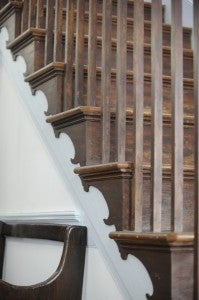
WAVES RISING: The trim on the Bonner House staircase follows a wave-like pattern. Southern yellow pine, which has been historically in abundant supply in eastern North Carolina, is used throughout the house for floors, trim and other woodwork.
Featuring a separate building housing a kitchen (it’s reproduction—the original burned down), the house is noted for its use of southern yellow pine: in its floors, doors, trim and banisters. Yellow pine was the most abundant building material, and Bonner had easy access to it, as his 3,000-acre plantation, just three miles outside of Bath, grew pine for harvesting in his turpentine business, according to Swain.
Of particular note in Bonner House, is the wave-like trim framing stair risers on the home’s main staircase, a design element Swain likes to think was born of the water’s influence.
The furnishings at Bonner House are a unique collection: many were donated in the early days of its preservation by residents pitching in to a local cause.
“Once we became a state site, (the state) also added to the collection,” Swain said.
Hand-stitched fire screens, a grandfather clock, four-poster beds raised high off the ground to accommodate rare breezes on hot eastern North Carolina nights — the period pieces all appear to be original to the house, though their origins are broad.
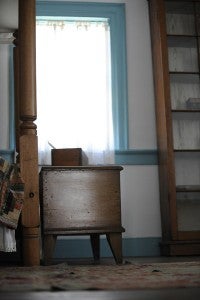 In a downstairs bedroom, a dovetailed chest hugs the end of a bed with four solid columns at each corner, along with a tall, glass-fronted book shelf. The walls are painted a fresh white, but it’s the color of the woodwork that brings a bit of the surprise—and a unique view into the past. It’s teal, and a paint analysis proved that teal was, indeed, the original color of the room’s trim.
In a downstairs bedroom, a dovetailed chest hugs the end of a bed with four solid columns at each corner, along with a tall, glass-fronted book shelf. The walls are painted a fresh white, but it’s the color of the woodwork that brings a bit of the surprise—and a unique view into the past. It’s teal, and a paint analysis proved that teal was, indeed, the original color of the room’s trim.
“Even though the teal color was shocking and not something you’d think of as an original shade — but it actually is,” Swain laughed.
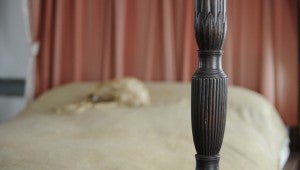 Swain said the home sees 17,000 to 18,000 visitors a year, and she’s aiming for more.
Swain said the home sees 17,000 to 18,000 visitors a year, and she’s aiming for more.
“We’d like that number to be more, but in another way, it’s kind of amazing that that many people find their way to little old Bath,” she laughed.
The Bonner House, along with the Palmer-Marsh house, will be featured on the Historic Bath Garden Club’s Homes Tour on Saturday. For more information about the tour, see the About Town feature on page 1A in today’s paper.


